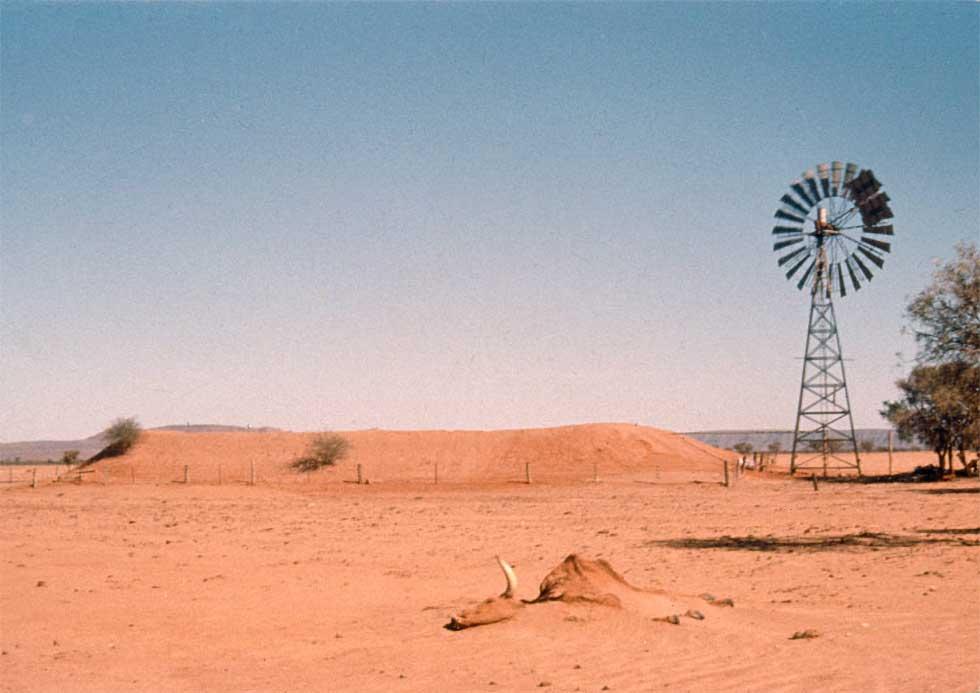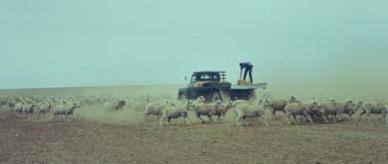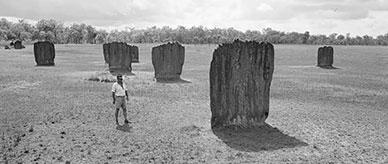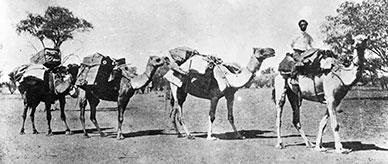


About the record
This colour photograph shows the landscape of a cattle station in the Northern Territory during a period of protracted drought. The harshness of the drought is illustrated by the lack of ground cover, the skeletal remains of a cow in the foreground and a lone windmill standing near a long earth mound, probably the sides of a water-holding tank. The red sands stretch almost to the horizon.
Educational value
- At the time this photograph was taken in 1962, the Northern Territory was in the grip of the severest drought on record, which lasted from 1957 to 1966. The Alice Springs area was the worst affected. In the year before the photograph was taken, a record 90 per cent of the Northern Territory was in drought and the following year, the longest period of drought (1962–65) began when more than 10 per cent of the Northern Territory was drought-declared. The drought finally broke in 1966.
- Drought is the most economically costly climatic extreme and its effects are clearly evident in the photograph. In 1962 cattle numbers were approaching their lowest level for more than 20 years in the Alice Springs area. Between 1959 and 1965, cattle numbers in the area halved. The Alice Springs area also had the highest stock mortality rate of 12 per cent of any area in the Northern Territory and the lowest return of 7.5 cents per hectare.
- The photograph shows a bore operated by a windmill with a raised wall dam alongside. The Southern Cross type of windmill seen here was first manufactured under that name in 1876, and reflects the fact that one of the earliest uses of wind power in Australia was for water pumping. Pastoralists depended on windmills to lift water from bores and wells to water stock.
- This photograph can be read as a symbolic image of a land shaped by human exploitation and drought. Australia is the driest inhabited continent on earth and although some areas have an annual rainfall of more than 1200 millimetres, the country's climate is highly variable both across the continent generally and from year to year. The image shows a landscape degraded by livestock and other introduced animals stripping the native vegetation, further aggravated by drought.
- A windmill like this one featured on the commemorative 50-cent coin for 2002 Year of the Outback. The Royal Australian Mint likened windmills to ever-vigilant sentries guarding life-giving water. It saw the windmill as a fitting symbol of the outback and said it stood for perseverance in a harsh environment, created a sense of timelessness and indicated the contribution made by the outback to the Australian identity.
Acknowledgments
Learning resource text © Education Services Australia Limited and the National Archives of Australia 2010.
Related themes
Need help with your research?
Learn how to interpret primary sources, use our collection and more.



